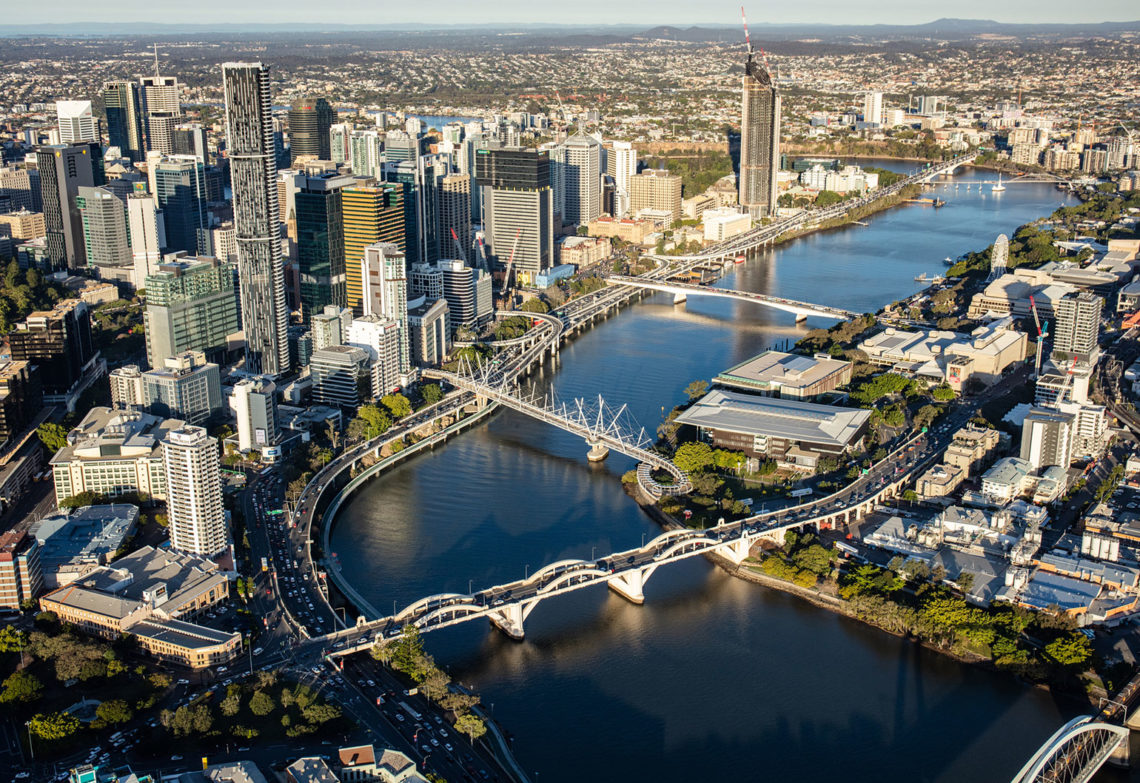Future industry, renewable energy and asset management are all priorities in Queensland’s annual infrastructure plan update, announced last week.
Queensland’s State Government has delivered a $49.5 billion, four-year infrastructure investment strategy aimed at developing future industries and connecting remote parts of the state.
The annual State Infrastructure Plan (SIP) Part B: Program – 2019 update accounts for changes such as a growing population, new technologies and economic shifts. It was launched in partnership with Engineers Australia, Consult Australia and the Infrastructure Association of Queensland at an event last week.
The Fourth Industrial Revolution, shifting demographics and new technologies offer opportunities for public and private sectors, but only if they are part of a holistic strategy that supports changes in physical and digital infrastructure, wrote the report’s authors.
They hope that doing so will see the development of emerging sectors, including advanced manufacturing, defence, aerospace, biofutures and renewables, and strengthen existing stalwarts like resources and agriculture.
“As Queensland transitions to a more innovative, diverse and productive economy, it is vital that our infrastructure maximises these opportunities and provides long-term, sustainable benefits to communities,” they wrote.
“At the same time, infrastructure investment needs to be balanced and provide immediate support for jobs and services.”
This year’s SIP includes detailed accounts of public and private projects for every region in the state. According to the SIP update, the scope of projected works will support more than 40,500 jobs across the state, the majority of which are intended for regional areas.
“Our regional towns and cities are the engine rooms of our state’s economy, and when our regions do well, so does all of Queensland,” said Minister for State Development, Infrastructure and Planning Cameron Dick.
“Regional Queensland will benefit from 60 per cent of this year’s infrastructure budget being invested outside Greater Brisbane.”
It’s hoped that connecting regional and remote areas through improved digital and physical infrastructure will open these areas to emerging industries and create “the right conditions” for economic growth, especially in sectors including agriculture, resources and tourism.
Therefore, it makes sense that transport infrastructure received the biggest investment for the 2019-20 financial year budget, at $5.6 billion, followed by energy at $2.2 billion. Other winners were water infrastructure ($400 million), health ($686 million) and digital infrastructure ($128 million). The Queensland Transport and Roads Investment Program will receive $23 billion over four years.
Rail and road networks are a heavy focus, not just in the physical infrastructure sense but also for how expanding capability in these areas feeds into improved supply chains, better connectivity between regional and urban areas, and required safety improvements. The state has also turned an eye to how local networks feed into nationwide transport strategies.
This SIP update sees greater emphasis placed on exploring smart and emerging transport technologies into existing infrastructure as well. This includes enabling electric vehicle uptake, pilots to test autonomous vehicle integration, and Internet of Things (IoT) technology to make existing infrastructure ‘smart’ and responsive.
Queensland’s $146.8 billion infrastructure pipeline is the second largest in the country, behind New South Wales. About $32 billion worth of projects are under construction or committed, while another $114.6 billion are in the planning stages.
You can read more about infrastructure investment in the Queensland state budget here.
Tapping natural resources
The state also plans to make use of its abundant natural resources through investment in wind, solar and hydrogen projects. The state’s renewable energy sector continues to be a key driver of engineering construction work, with a total of 36 renewable energy projects either committed to or underway. This includes the Mount Emerald Wind Farm and the Lilyvale Solar Farm.
Resource recovery and the circular economy received a boost as well, with $100 million pledged over three years to enhance and expand existing resource recovery facilities, as well as bring new innovations in this field to the state. This includes introducing new measures to reduce the 5 million tonnes of waste produced by the state’s building and construction sectors each year.
It also includes efforts to reduce emissions from the construction of new infrastructure to meet the state’s target of 30 per cent below 2005 levels by 2030, and net-zero emissions by 2050. The agriculture, biotechnology, resource and research sectors are also being encouraged to collaborate to transform the state’s bioproducts into a $1 billion industry.
The report’s authors state the goal is to “make Queensland a world leader in resource recovery”.
More than 44,000 square kilometres have also been earmarked for resource exploration, as international demand for liquified natural gas (LNG), coal and minerals remains high.
Building resilience
Future-proofing infrastructure against the growing incidence and severity of natural disasters was also in the spotlight. Almost $40 million is devoted to safeguarding critical infrastructure against floods, fires and other extreme events.
For a state as prone to floods, tropical cyclones, droughts and fires as Queensland, well-designed, resilient infrastructure is a must. This investment is timely, as this past year was one of the most destructive storm and fire seasons in the state’s history — a record 11 natural disasters struck over the summer of 2018-19.
“Improving our state’s disaster resilience not only protects our communities and our vital infrastructure, it will reduce future restoration costs,” said Premier Annastacia Palaszczuk.
Several key transport routes have been updated to reduce the impacts of cyclones and major flooding, and additional funding has been pledged to increase community and infrastructure resilience.
You can view the full Queensland State Infrastructure Plan Part B: Program – 2019 update here.


![[Free Download] Buyer’s Guide to 3D Printing for Manufacturing](https://createdigital.org.au/wp-content/uploads/2019/07/EA_3D_PBG-75x75.jpg)
